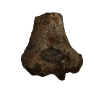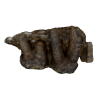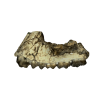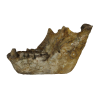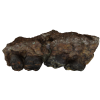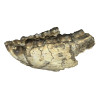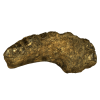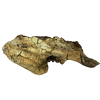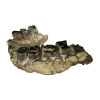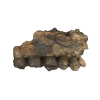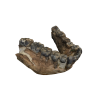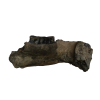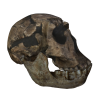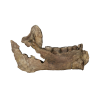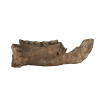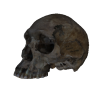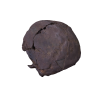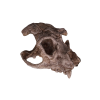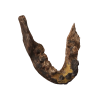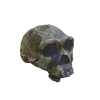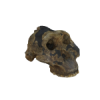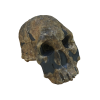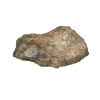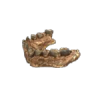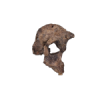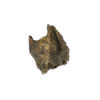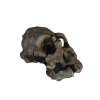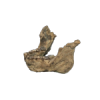This very complete skull was discovered in 1959 by Mary Leakey at Olduvai Gorge in Tanzania, and is sometimes known as "Zinjanthropus" (southern ape) or the "Nutcracker Man". It was hugely significant as it put Africa on the map as the place where human ancestors originated, rather than from Asia which was the conventional thinking at that time. It had been a real struggle for Louis and Mary to raise the support to conduct their rather infrequent expeditions to Olduvai, but this discovery generated significant interest and led to much needed financial support for further exploration. This discovery was also significant because it led to the first radiometric date of a prehistoric site of this antiquity. The date was found to be an extraordinary 1.8 million years. This find marked the beginning of the next five exciting decades of paleoanthropological exploration in East Africa. This species is distinct in that it has enormous cheek teeth, equipped for a diet of coarse foods such as tubers, sedges and grasses. The powerful chewing muscles attach to a pronounced ridge running along the top of the skull, known as the sagittal crest.
|
Paranthropus boisei
OH 5 Age approx. 1.75 Million Years
Digital Capture: Photogrammetry Zinjanthropus or Nutcracker Man 0 Comments Order: Primates Family: Hominidae Tribe: Hominini Genus: Paranthropus Species: boisei Element: Cranium Locality: Olduvai Gorge, Tanzania Year of Discovery: 1959 Other Fossils to View |



